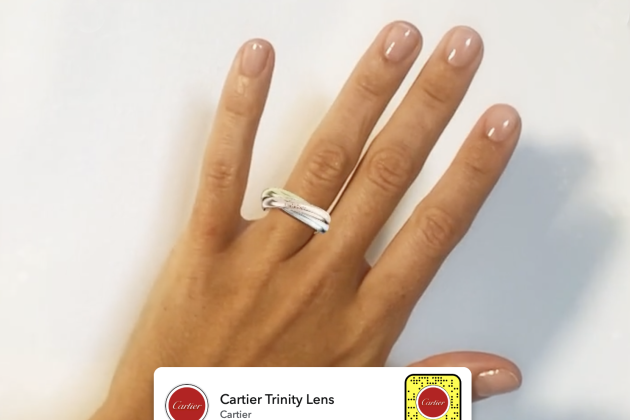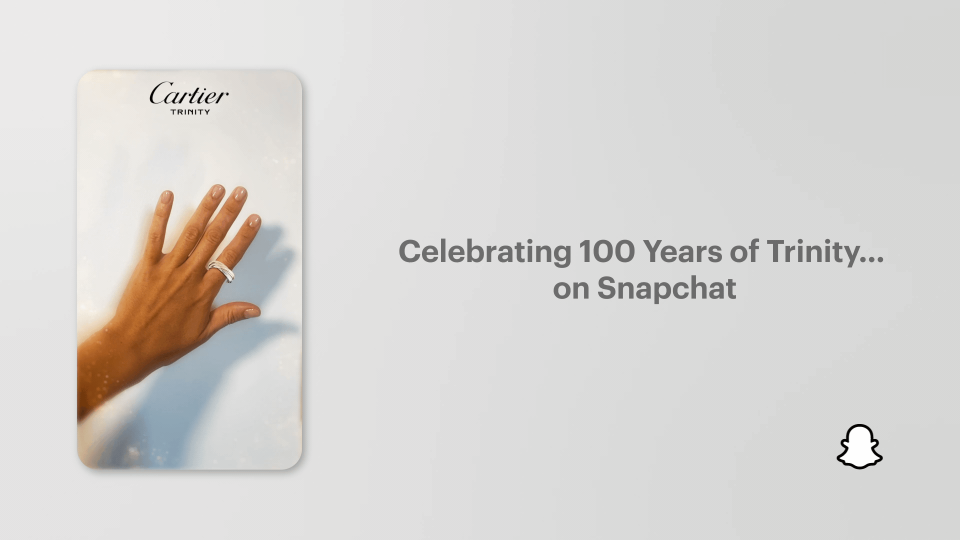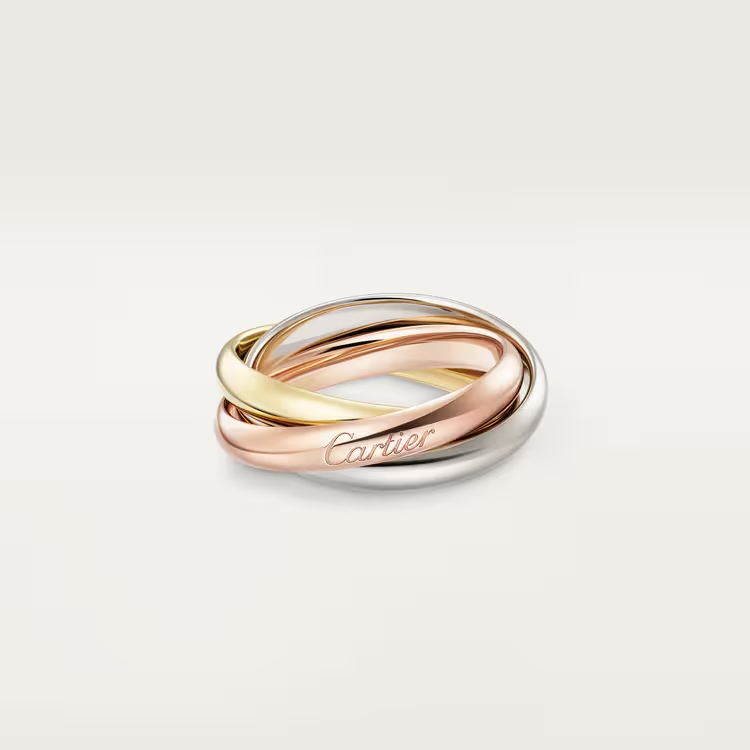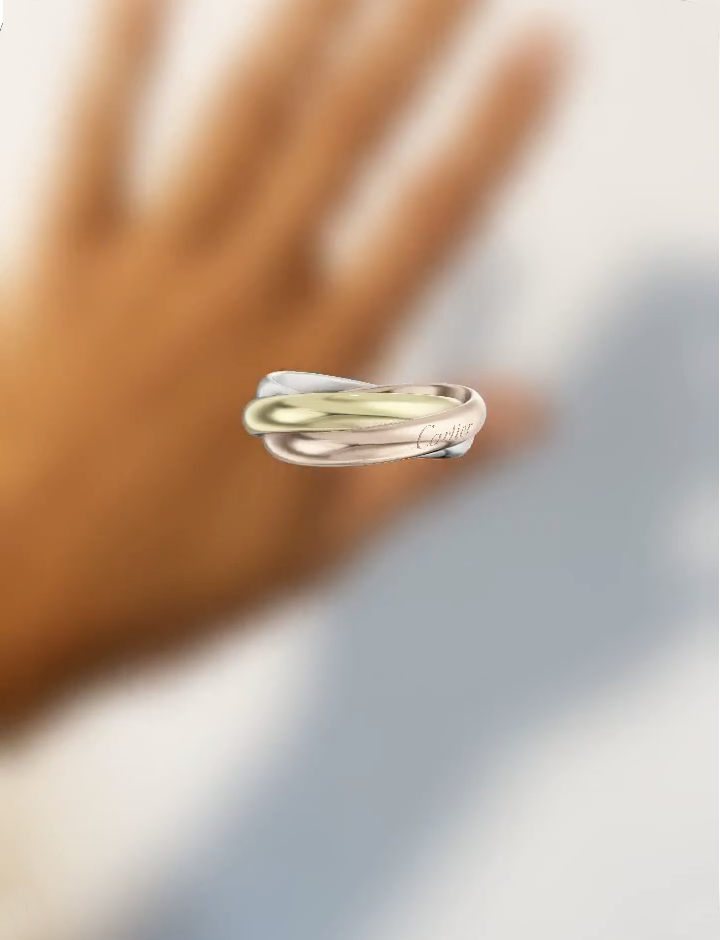Cartier’s Trinity Ring Arrives in Virtual Form at Snapchat

When Cartier introduced its Trinity ring in 1924, the maison could have hardly imagined how it would celebrate its signature ring’s centennial anniversary — with virtual technology that allows anyone, even those who can’t afford the real thing, to try it on digitally.
Unveiled Wednesday, the new experience is the latest product from a longstanding partnership between Cartier and Snapchat developer Snap Inc. According to Arnaud Carrez, senior vice president and chief marketing officer at Cartier, the two worked together “to develop an exclusive ring try-on that would bring this universal icon to life in augmented reality, and allow everyone to join the celebration.”
More from WWD
This includes people who may not already know Trinity or its lasting legacy at Cartier. The try-on, which spotlights the classic ring, could act as an introduction for a whole new generation by virtue of Snapchat’s largely Gen Z user base. Bustling with some 800 million people, the platform reaches 75 percent of the 13- to 34-year-old population, and a whopping 90 percent of 13- to 24-year-olds across more than 25 countries.

Whether they’re familiar with Trinity or not, they surely know Cartier — if not for its premium jewelry and accessories, then for its numerous references in hip hop or the brand ambassadorship of BTS’s Kim Taehyung, aka V. The company has also released several AR experiences ranging from virtual bracelets and wristwatches to its double “C” logo, branded experiences and more.
For Geoffrey Perez, global head of luxury at Snap Inc., the Trinity Lens is another milestone in a partnership that demonstrates “the brand’s confidence in our ability to reach important audiences in innovative ways.” This innovation, he pointed out, comes down to creating a virtual experience that’s “more precise and life-like than ever before.”
The realism comes down to Snapchat’s ring try-on technology, which was developed exclusively with Cartier, as well as advanced hand-tracking and Ray Tracing, a feature that simulates light reflecting on digital objects. The lens also benefitted from machine learning, which can predict 3D hand surfaces and understand the shape of each person’s hand, Snap said.
For Cartier, such details mattered. It wanted a realistic experience, even down to the accuracy of the fit and the placement on the finger. The result: The user is able to move their hand freely, just as when trying on a physical ring, and see the virtual jewelry follow the finger as it sparkles and reflects light. This goes a long in way in separating it from AR objects that look overly cartoon-ish.

Although the tech is not yet available to AR creators and developers in Lens Studio, Snap promised that it will be coming soon. As for the broader Snapchat community, they won’t have to wait to swathe their digits in digital luxury. They can try on Cartier’s virtual ring and, if they have the means, shop the product.
The AR Lens is shoppable, Perez confirmed, just as with the maison’s other lenses.
“Through AR, shoppers don’t have to step foot in a store and can show off their style with products that are limited, digital or otherwise impossible to access,” he added. “With luxury, this can take some of the pressure off of the in-person shopping experience, letting our largely Gen Z community try on items in their own space and on their own time.”
Across the ring’s variations and interpretations, retail prices range from $1,420 up to $41,400, not including Trinity bracelets, necklaces and other styles. The collection includes classic looks, as well as the reissue of an XL version and two recently reimagined versions featuring modular and cushion-shaped designs.

When Louis Cartier conceived of Trinity a century ago, he couldn’t have imagined a technology like augmented reality, much less how it could be used to bring his creation closer to the public one day. But if he could have, he might have been pleased.
The company’s announcement describes the linked bands as “far from the norm at that time; a ring that brought jewellery into modernity,” with the use of yellow, rose and white gold in the original symbolizing diversity, harmony and connection.
“And finally, because it is made for everyone — famous or not — with no age limit, without boundaries, with no need to conform, designed for everyone, with no taboos. It is a universal icon that weaves bonds of love into everyday life and whose codes have become Cartier’s signature,” it added.
With that in mind, allowing anyone anywhere the ability to admire it on their own finger seems rather fitting.
The Trinity Ring AR Lens may be the most broadly accessible aspect of the anniversary celebration, but it isn’t the only way Cartier has been marking the occasion. The virtual try-on is just one part, alongside an international campaign and a series of events in February in Paris, London and New York, where personalities like Jake Gyllenhaal, Vanessa Kirby, Rami Malek, Monica Bellucci and Sofia Coppola, among many others, were in attendance.
Best of WWD
Solve the daily Crossword

